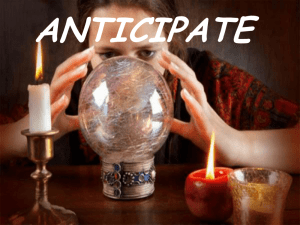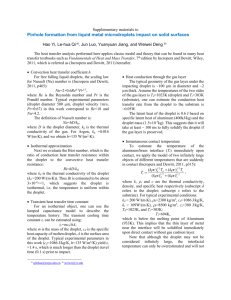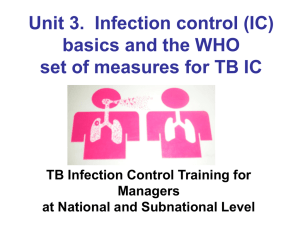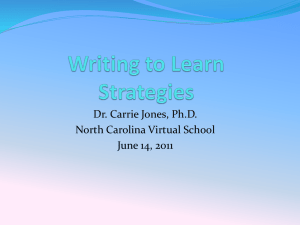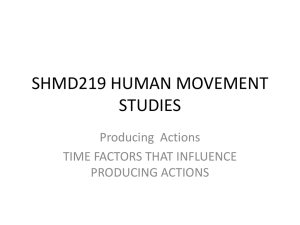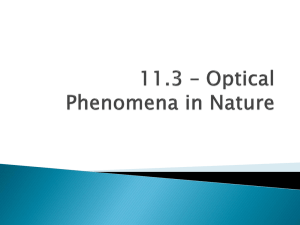Water Cycle
advertisement
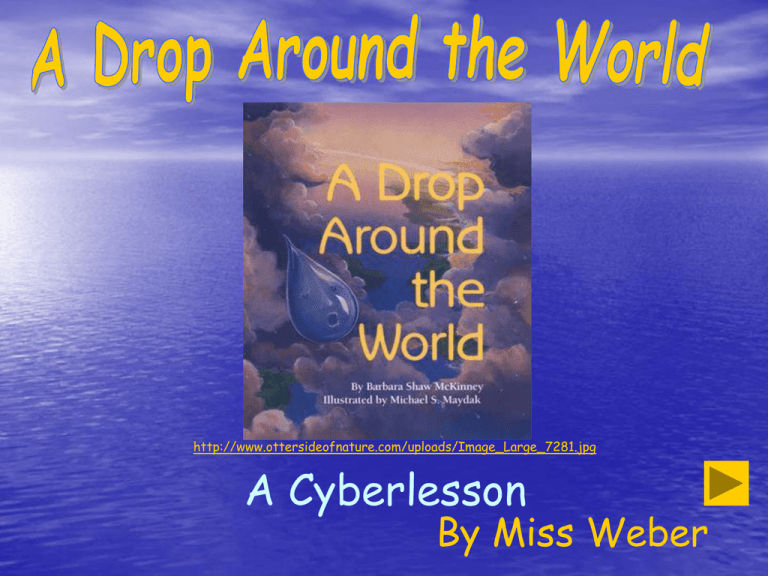
http://www.ottersideofnature.com/uploads/Image_Large_7281.jpg A Cyberlesson By Miss Weber Have you ever wondered where a water droplet travels after it leaves your faucet? How about where that water drop came from? Or how that droplet changes from a liquid to a solid? What about from a liquid to a vapor? Today you will travel all around the world with a water droplet and explore the many locations water travels! During our journey you will discover possible answers to these questions along with many others!!! A copy of A Drop Around the World by Barbara Shaw McKinney A computer with internet access A pencil An anticipation guide A response log “Raindrop, take us to the skies. Teach us how to vaporize. Condense us so that we can flow to places only raindrops go. Cycle with us through the trees, underground, beneath the seas. Please explain the things you do, your special tricks and changes too. In fact, some symbols shown in black would be more helpful keeping track. Now show us how you work and play…Let’s tour the world, the ‘raindrop way.’ Then afterwards, when all is done, we’ll share your secrets, one by one. P.S.: Drop, if we lose you, don’t despair- we’ll find your face on each page somewhere.” By: Barbara Shaw McKinney 1. In your response log make at least 3 predictions about places you think the water droplet will travel. 2. Fill out the vocabulary anticipation guide placing a check under the green if you know what the word means, check the yellow if you think you know a little about that word, or the red if you do not know what the word means. We will learn more about these words so it’s ok if you don’t know what some of them are right now. 3. Click on the picture below to watch a video of the water cycle and then write at least 3 things you observed water doing. http://www.upperdublin.net/images/information/thirstinws.gif Anticipation Guide Vocabulary Precipitation Vaporize Condense Evaporating Reservoir Moisture Steam Freeze I Know It I Know a Little About It I Don’t Know It 1. As you read, you will notice there are small icons next to some of the text. These images represent a state of water or a property of it. Flip to the last two pages in the book and read more information about each image. 2. As you are reading please check your predictions and see if the water droplet visited any of the places you predicted. Make a mark next to the ones he visited. Record at least 3 places he visited that you did not predict. 3. In your response log record the different forms that water takes. Please provide at least 2 examples from the book that show each state of water. Click here for help with the stages. 1. Revisit your vocabulary anticipation guide, look at the words you checked in the yellow and red column. Place an X in the green column of the words that you now know. 2. Click on the picture below to visit another diagram about the water cycle. After you have watched it click on the word “label” and move the names of the stages to match the pictures. If you select the wrong stage it will not let you move it there, so try again! http://cnobleza.files.wordpress.com/2009/02/watercycle2.gif 3. Now that you have labeled the stages in the water cycle, lets see if you can fill in the blanks for this passage about the water cycle. Click on the picture below and test your knowledge. Good Luck!! http://education.jlab.org/reading/water_cycle.html 1. Click here to read some additional fun facts about water. Then click on the picture to test your knowledge! 2. Working with a partner you will now create your own page to add to this water droplets adventure. Look back through the book and notice how the author used rhyming. Then, pick a specific location and a stage of the water cycle that you would like to write about. Don’t forget to include the same helpful images the author did. Have fun and be creative! This lesson is for third grade students who are studying the water cycle. The lesson can be completed individually or with partners for those students who may be below the reading level of this text. It should be split across at least two days. Slide 5: After students have completed their anticipation guide I will check and see which vocabulary words are unfamiliar to the class. If needed I will visit groups during the lesson to help clarify meanings. Slide 7: As students are reading I will check to see if they are using the information in the back of the text as well as marking their predictions. Slide 8: I will monitor how many words students have been able to mark in the green column on their anticipation guide. I will also remind/guide students who are having trouble with labeling the water cycle to use the other websites. Slide 9: I will remind students to read all of the choices for each blank. Also to use their reading strategies about what makes sense. Slide 10: I will allow students to have additional time on a second day to complete their own page. Students will be paired up in mixed ability groups to aid each other. 3 2 1 Before Reading I made 3 or more logical predictions about where the water droplet would travel. I completed my anticipation guide and wrote at least 3 logical observations about water that demonstrated a strong level of understanding. I made 3 some what logical predictions about where the water droplet would travel. I completed my anticipation guide and wrote 3 some what logical observations about water that demonstrated a limited level of understanding. I made less than 3 predictions about where the water droplet would travel. I did not completed all of my anticipation guide and wrote less than 3 observations about water that demonstrated a limited level of understanding along with some misunderstanding. During Reading I used the info on the last 2 pages to help me. I reviewed my predictions and wrote at least 3 other logical places the droplet visited. I wrote the 3 phases of water and gave at least 2 logical examples from the text for each. I used the info on the last 2 pages to help me a little. I reviewed my predictions and wrote at least 2 other logical places the droplet visited. I wrote the 3 phases of water and gave at least 1 logical example from the text for each. I did not used the info on the last 2 pages to help me. I reviewed my predictions and wrote at least 1 other places the droplet visited. I wrote the 3 phases of water, but some were incorrect and didn’t gave any examples from the text for each. 3 2 1 After Reading I revisited my anticipation guide and marked the words I now know. I correctly labeled the stages of the water cycle and I was able to answer 11 or more questions correctly demonstrating knowledge that I gained. I revisited my anticipation guide and marked a few words I now know. I correctly labeled the stages of the water cycle and I was able to answer 7 -10 questions correctly demonstrating some knowledge that I gained. I revisited my anticipation guide and did not marked the words I now know. I correctly labeled only 1 stage of the water cycle and I answered less than 7 questions correctly demonstrating a limited level of knowledge that I gained. Beyond Reading I read the additional facts about water and correctly answered 20 questions. I created a rhyming creative page that demonstrates a level of complete logical comprehension of the various phases of water. Information gained from this lesson is applied. I read the additional facts about water and correctly answered 15 questions. I created a rhyming creative page that demonstrates a limited logical level of complete comprehension of the various phases of water. Information gained from this lesson is applied. I read the additional facts about water and correctly answered 10 questions. I created a page that demonstrates very little comprehension of the various phases of water. Information gained from this lesson is not applied. A Drop Around the World by Barbara Shaw McKinney Thirstin’s Water Cycle http://www.epa.gov/safewater/kids/flash/flash_watercycle.html CrickWeb http://www.crickweb.co.uk/assets/resources/flash.php?&file=watercycle EAP- Ground and Surface Water: Kid’s Fun http://www.epa.gov/safewater/kids/waterfactsoflife.html Thirstin’s Question and Answer Game http://www.epa.gov/safewater/kids/flash/flash_qagame.html The Water Cycle http://www.kidzone.ws/water/ Reading Comprehension- The Water Cycle http://education.jlab.org/reading/water_cycle.html Images: Thirstin’s http://www.upperdublin.net/images/information/thirstinws.gif Water Drop http://universityspacafe.com/images/water_drop.png Slide 8 Water Cycle http://cnobleza.files.wordpress.com/2009/02/watercycle2.gif Slide 9 Water Cycle http://education.jlab.org/reading/water_cycle.html
